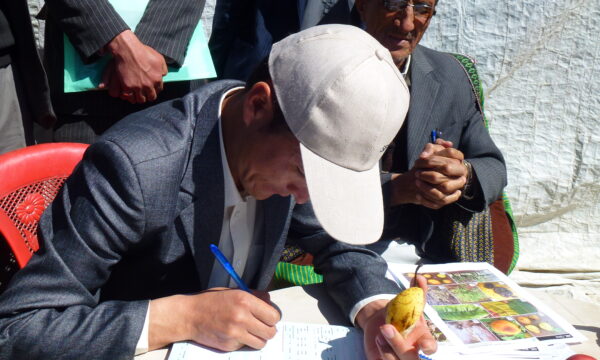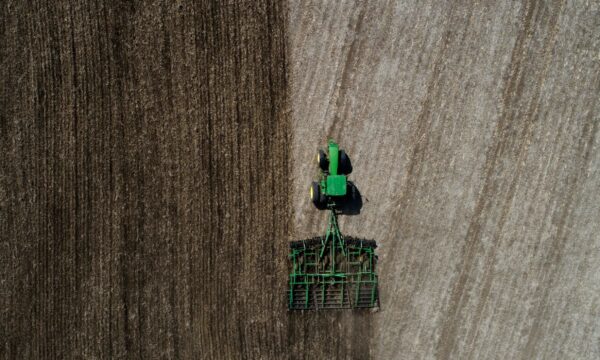
Aerial study finds new evidence of wetland agriculture and climate impacts.
Understanding the scope and culture of ancient civilisations provides valuable insight into the roots of human society and the ways in which we have been changing the world around us for thousands of years.
Ancient Maya civilisation persisted from approximately 2000BC to 1700AD. Researchers have been developing an understanding of the culture and agricultural activities carried out by the Maya since the 1970s, with the picture becoming steadily clearer as more advanced technologies are developed. A recent study carried out by researchers at the University of Texas has used aerial ‘lidar’ (light detection and ranging) imagery in order to further investigate the scale and type of Maya farming activities in the Rio Bravo watershed of Belize, Central America.
The researchers focused on an area around the Birds of Paradise wetland field complex, which is a well-established site of Maya agricultural activity beneath the tropical forest in Belize, previously understood to be about 1km2 in size. With the use of the aerial imagery, the researchers identified that the Birds of Paradise field complex is five times larger than previous works involving ground survey techniques had indicated, and identified several other wetland field complexes in the area. These findings were then verified with a number of ground-level methods, including excavations and dating.
These results paint a picture of much more significant agricultural activity in this area by the Maya. Previous work has confirmed that farming activity in this area comprised a complex mixture of different crops and animal husbandry, including the cultivation of maize, avocado, squash and cassava and the maintenance of large mollusc farms. With this new understanding of the scale of these agricultural activities it is clear that the products were used to support a significant local population, and were possibly transported elsewhere for longer-range trade. The researchers delve further into the temporal significance of the findings, linking the creation and expansion of these wetland field systems with two major environmental changes known to have occurred during the time of Maya civilisation.
One of the primary conclusions drawn in the paper is that these results contribute to the growing evidence that anthropogenic impacts on tropical forests began earlier in human history and were more intensive than previously thought. The creation of these field systems involved the clearance of large areas of tropical forest and creation of wetlands and canals, resulting in the release of CO2 and CH4 into the atmosphere. Large areas of ancient farmland are being discovered through the use of emerging technologies like lidar imagery, and the researchers suggest that the actual area was probably once even larger, but modern ploughing and draining activities have masked possible further evidence.
Our understanding of the scale of ancient Maya civilisation continues to develop, and the researchers suggest that further work spanning a range of complementary methods will be required in order to confirm the scope of ancient Maya agriculture and quantify its contribution to the long-term atmospheric build-up of greenhouse gases, but it seems likely that this ancient civilisation did contribute to the early Anthropocene more significantly than was previously thought, and it is clear that anthropogenic climate change has been a long time in the making.
Read the full article:
Beach, T., Luzzadder-Beach S., Krause S., Guderjan T., Valdez Jr., F., Carlos Fernandez-Diaz, J., Eshleman, S., & Doyle, C. (2019). Ancient Maya wetland fields revealed under tropical forest canopy from laser scanning and multiproxy evidence. Proceedings of the National Academy of Sciences of the United States of America
To find similar articles, visit CABI’s Forest Science Database and use the search: [Maya AND (agriculture OR agroforestry)]
Or see below:
Anthropogenic impact in the Maya Lowlands of Petén, Guatemala, during the last 5500 years.
Traditional agroforestry systems and food supply under the food sovereignty approach.
Forests, fields, and the edge of sustainability at the ancient Maya city of Tikal.
Trees, fire and farmers: making woods and soil in the Maya forest.
Ancient Maya agroforestry echoing through spatial relationships in the extant forest of NW Belize.
1 Comment
Leave a Reply
Related News & Blogs
Soil health: why it’s important and how to protect it
This blog was originally uploaded on the CABI BioProtection Portal Soil is the foundation of agriculture and sustains life on earth by providing nutrients, clean air and water. Human activities can damage soil health and, therefore, impact entire ecosy…
27 December 2023





hey nice blog thnks for sharing